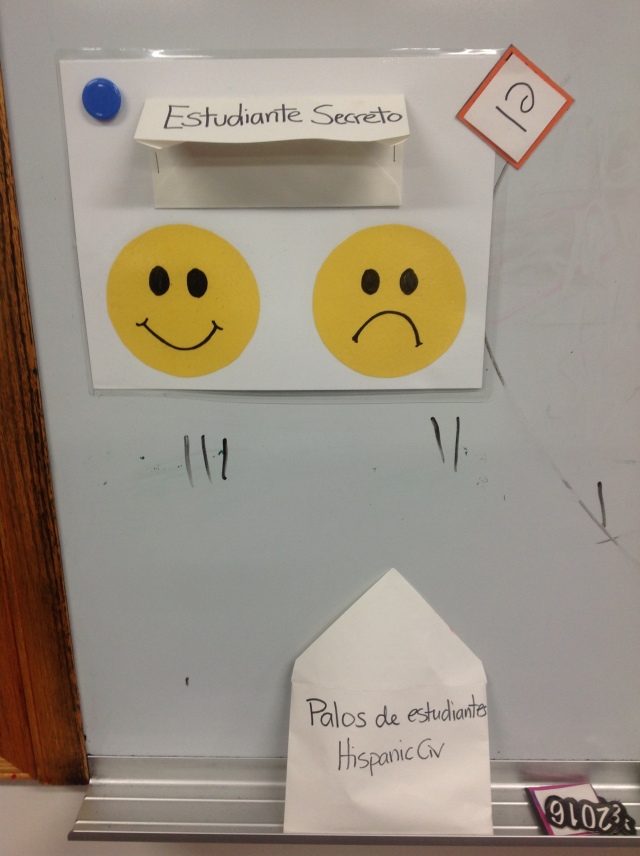 I spent some time this summer thinking about ways to motivate my students to speak in the target language in class. Specifically, I’m interested in helping to motivate my Spanish Immersion students to stay in Spanish when they are speaking to one another. In general, they are happy to participate in class discussions and address me directly in Spanish, but when they are given time to work in groups or individually, their conversation tends to be in English. My efforts over the past few years to encourage them to talk to each other in Spanish have turned into nagging and students get tired of it pretty fast.
I spent some time this summer thinking about ways to motivate my students to speak in the target language in class. Specifically, I’m interested in helping to motivate my Spanish Immersion students to stay in Spanish when they are speaking to one another. In general, they are happy to participate in class discussions and address me directly in Spanish, but when they are given time to work in groups or individually, their conversation tends to be in English. My efforts over the past few years to encourage them to talk to each other in Spanish have turned into nagging and students get tired of it pretty fast.
While on Pinterest, I found a post about a “mystery student” classroom management method and decided to give it a try. We are only a week or so into using this strategy, but students have really seemed engaged by it and the amount of Spanish I’ve heard has gone up drastically. Here’s the details: I tell students that we are going to pick an “estudiante secreto” and then determine a length of time (or set of activities) we will use the mystery student for. I pick a student’s name randomly and place it in an envelope without sharing the name with the class. If the student whose name I picked stays in the target language during the determined length of time, that student earns a prize (so far it was a couple points on the first vocabulary quiz of the year). The catch is that there’s also a happy and sad face on the board. As we work, if I hear other students speaking in English, I put a hash mark under the sad face. If I hear good use of Spanish, I put a hash mark under the happy face. If there are more marks under the happy face than the sad face by the end of the set time period, I reveal the secret student. If not, then we simply skip it.
So far, every “estudiante secreto” has been revealed and won a prize! Last block today, the “game” lasted almost the entire hour class! And… during the last 5 minutes after I had revealed the name of the “secret student”, and students were having their own conversations, they continued IN SPANISH! Hooray!






